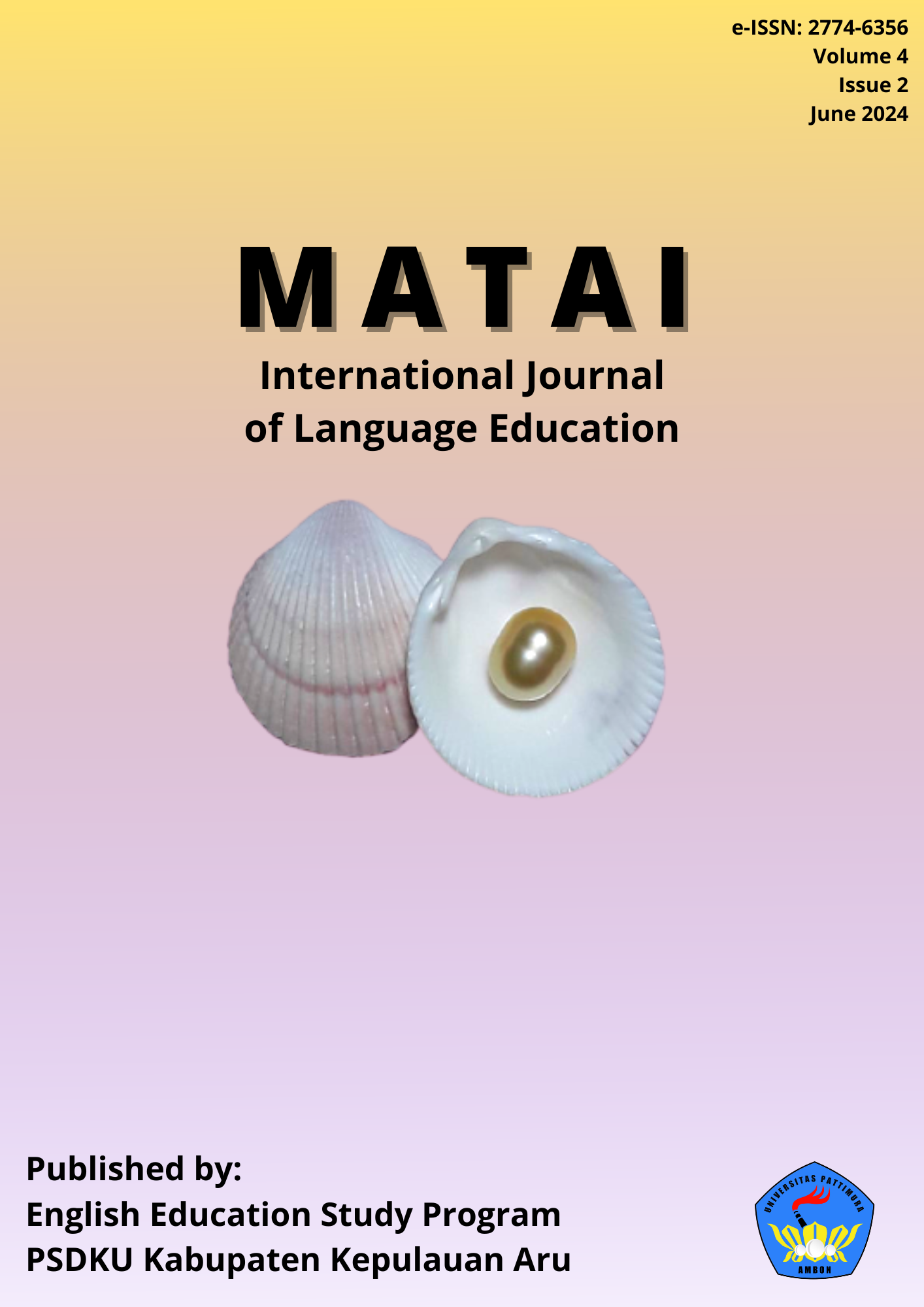Improving the Ninth Grade Students’ Vocabulary Mastery through Animation Movies at SMP Gwamar Dobo
Abstract
This research aims improve vocabulary mastery of class IX students through animated movies at SMP Gwamar Dobo. This research uses classroom action research (CAR) as its research methodology. This research consists of 2 cycles. The participants of this research consisted of 10 students. Data collection was carried out in the form of tests, namely pre-test and post-test, observation checklist and questionnaire. The data provided is in the form of quantitative and qualitative data. Cycle I; The researcher used a pre-test, namely; 1. Students wrote synonyms in verb form, 2. Students wrote antonyms in adjective form and, 3. Students interpreted sentences in noun form. After the researcher gave treatment to the students through an animated movie, the researcher gave training in forms, pronunciation, spelling, meaning and verbal and writing in short sentences to the students. Then the researcher gave post-test cycle I using the same test as the pre-test. From the results of this test, the results obtained turned out that there had not been a significant improvement, so the researchers decided to use cycle 2 by giving students treatment through different animated films (students watched animated movies) and the researchers also provided exercises so that they could train students' abilities. After the researchers carried out treatment on the students, the researchers gave the students a post-test cycle 2, including; 1. Verbs in infinitive form (Past tense), 2. Adjectives in opposite words (Antonym) form, 3. Write short sentences using nouns. From these two cycles there was a difference in improvement so that the researcher could conclude that there was an increase in vocabulary among students in cycle II.
Downloads
Copyright (c) 2024 Olivia Carolina Matulessy

This work is licensed under a Creative Commons Attribution 4.0 International License.
Authors who decide to share their articles with this journal must agree with these requisites:
|
1. The author, as the copyright owner, gives Matai the right to publish their work 2. Authors can share their articles, but they have to use Matai's published version by acknowledging Matai as the source. 3. Authors are encouraged to share their work online in order to let people know about their articles which can lead to more citations of the published work. |


